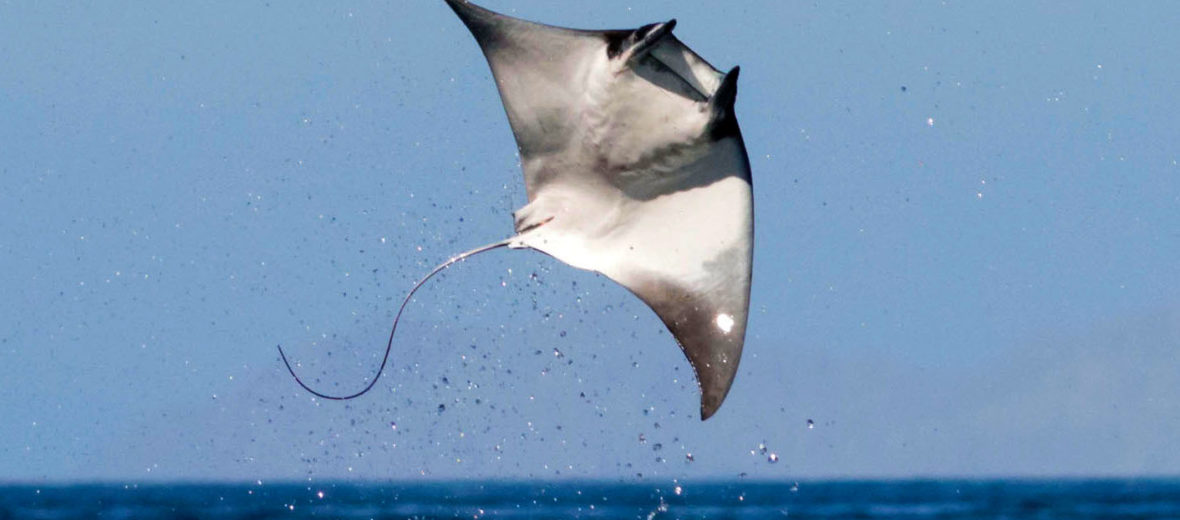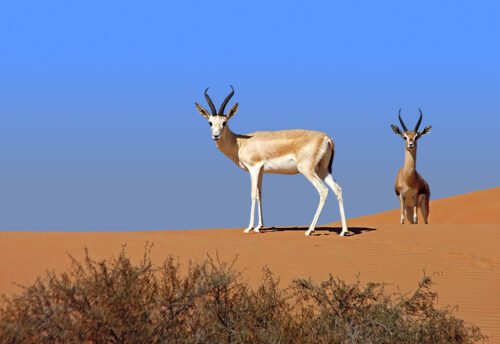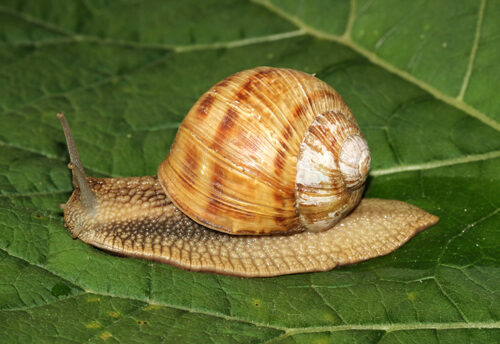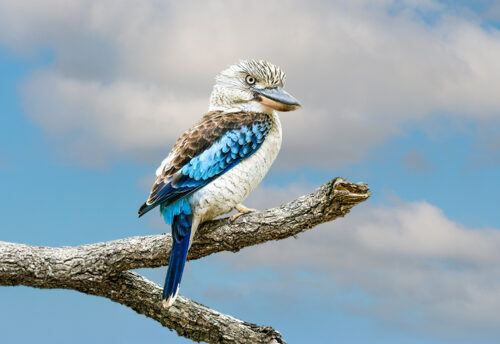
From its amazing aerial acrobatics to its devilish looks, it is easy to see why there is a great fascination with the devil ray in the scuba diving and scientific communities. Migrating together in small groups, these giant rays can be seen in temperate as well as tropical waters throughout all the oceans but is frequently seen in the Mediterranean Sea, in deeper water. They seldom come into shallow waters, but it does happen. There are approximately 11 known species of these rays, but it is still uncertain if there are more to be discovered. These rays are listed as Endangered to Vulnerable by the IUCN.
First the Stats…
Scientific name: Mobula mobular
Weight: Up to 2,000 lbs
Width: Up to 17 feet
Lifespan: Up to 20 years
Now on to the Facts!
1.) Devil rays are an epipelagic species in that they can be spotted relatively near the surface and as deep as light will penetrate the water.
2.) They are the only known vertebrate to have 3 pairs of working limbs: the pectoral fins, the pelvic fins, & the cephalic fins.
3.) Apparently, their light red flesh tastes very good, but fortunately there aren’t enough of them to catch commercially and make a profit from it.
4.) These rays feed almost exclusively on microscopic zooplankton, but will also consume small fish and swimming crustaceans.
5.) Their only known predators are sharks. They also occasionally are the victims of bycatch (getting caught in fishing nets and long lines).
But wait, there’s more on the devil ray!
6.) The devil ray is capable of diving up to 3,000 feet to water as cold as cold as 41°F. They are able to do this due to their counter-current heat exchange system in their bloodstream that allows them to keep their brains and bodies at an acceptable temperature.
7.) Females give birth to just 1 pup every 2 – 3 years, although it is possible for them to birth 2 pups.
Did you know…?
Out of the 32,000 known fish species, devil rays, as well as manta rays, have the largest brain to body size ratio. They are also very intelligent, coordinating feeding strategies, as well as engaging in social interactions.
8.) Being ovoviviparous, the female develops her egg inside her body and then births a live young, then reabsorbing the egg shell as calcium.
9.) The Mobula rays are often seen performing leaps into the air. They then splash down into the water only to repeat the jump again. It is presumed that this behavior is to remove parasites from their skin, corral fish shoals into a tighter ball, or simply for entertainment.
10.) Of all the known devil rays, only the spinetail mobula is known to have a stinger.
Now a Short Devil Ray Video!
Also, check out the Critter Science YouTube channel. Videos added frequently!
Want to suggest a critter for me to write about? Let me know here.



